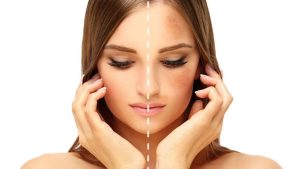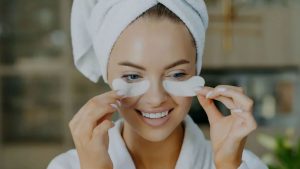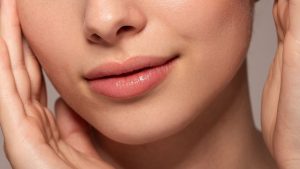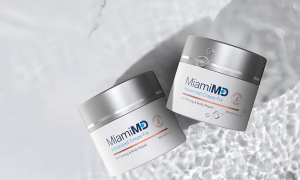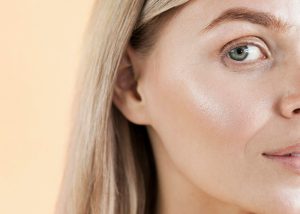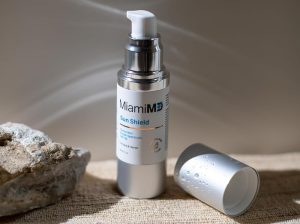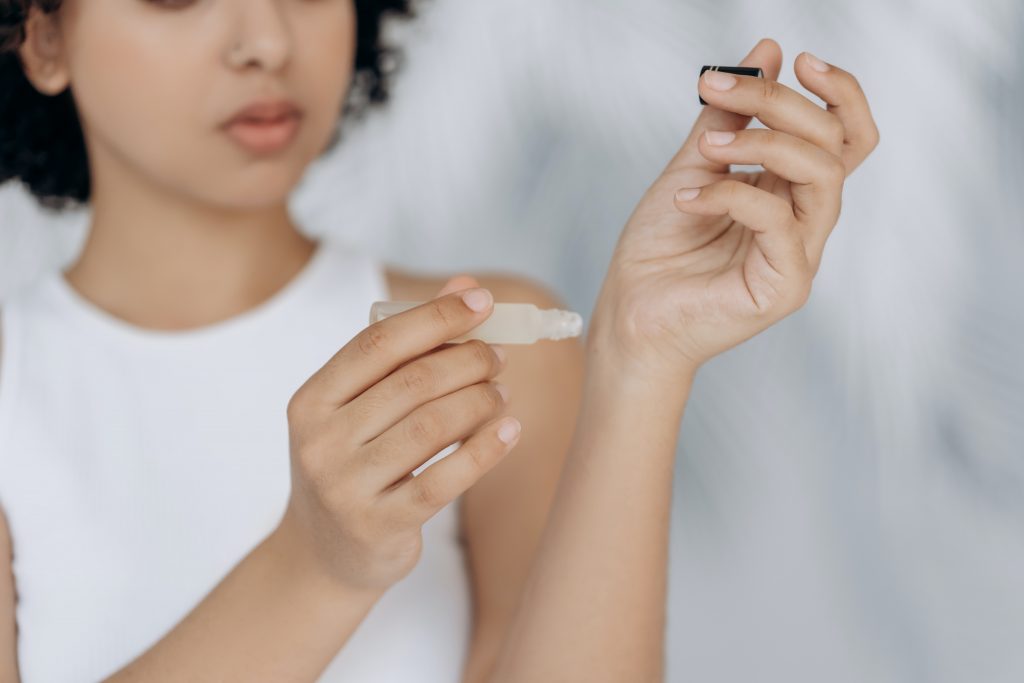
Skincare serums are an excellent tool for anyone seeking to unveil their best, most beautiful, radiant skin. When used as just one part of a comprehensive skincare routine, the right serum can help you reveal a youthful glow that you never thought possible.
If you’ve never used skincare serums before, or if you’re interested in learning some new tricks and tips to make your existing serum work even better for you, MiamiMD is here to help.
Hopefully you’ll leave this article having the right knowledge to finally find the skin of your dreams!
What is a Skincare Serum?
Skincare serums are liquids (either oil-based or water-based) that were designed to be easily absorbed by the skin. They normally come in smaller bottles, and a little bit goes a long way. They are highly concentrated, so just a few drops are enough for the entire face.
It should not be confused with a moisturizer, as the two perform different roles when it comes to the health of the skin.
There are many different skincare serums out there, with numerous different goals. One of the most common reasons that people use skincare serums is to help with age-related concerns, like wrinkles and dullness, but they can also be used for blemishes and just overall skin health.
Most skincare serums are full of nutrients, which is part of how they can provide such powerful results. Those nutrients are combined with an active ingredient that will work best in tandem with them, mostly peptides.
Peptides are so commonly used in skincare serums because they are so effective. Essentially, peptides are chains of amino acids linked together with peptide bonds. These peptides also form proteins, like collagen and elastin, which is why they are such a beloved ingredient in so many skincare products.
Full proteins are often too big to be able to fully penetrate the pores, so the much smaller peptides are able to succeed in a way that using entire collagen or elastin molecules can not.
What Type of Skincare Serums Are Out There?
Although there are hundreds and hundreds of skincare serums out there, they usually fall into one of two different categories: skincare serums for the entire face and skincare serums that are targeted.
When it comes to targeted skincare serums, the most common target is the under eye area.
For instance, MiamiMD’s targeted skincare serum, our Intensive Eye Repair Serum, is meant to help reduce visible signs of aging in the under eye area.
Specifically, our serum uses a combination of multiple peptides, like eyeliss, matrixyl 3000, haloxyl, and progeline, to visually lift the eyes, lighten under eye circles, reduce puffiness, and send signals to replace lost collagen. Because crow’s feet are one of the most common complaints that people have about their faces, it’s logical to focus on treating them specifically.
Always Cleanse First
Skin serum is a middle step that happens after your cleanser and before your moisturizer.
It’s always important that you cleanse your skin before you start any skincare routine. Over the course of the day, everything you encounter impacts your face. Whether that is environmental pollutants and toxins, ultraviolet radiation, or wind, small particles end up covering the top layer of your face.
In addition, our skin is constantly renewing itself, which means that the dead skin cells that are being replaced (roughly every 27 days) will need to go somewhere, as well as all of the excess oil that your skin naturally produces. Cleansing helps clear all of that off so that you can start fresh.
Cleansing the skin also helps clean the pores out so that they are more available to absorb your skincare products. With a more open route into the skin, serums can become even more effective.
Some people also recommend exfoliating prior to applying a serum as well. This can help to further clean out the pores, but it may also be irritating to the skin. Putting a serum, especially one that contains any acidic components, on irritated skin is never a good idea, so always be gentle.
You’ll also want to use lukewarm water instead of hot water when you cleanse. Hot water can dehydrate the skin, which defeats the point of using any hydrating serums.
Can You Use More Than One Skincare Serum At A Time?
Yes, you absolutely can! However, there really is an art to being able to do it well without reducing the effectiveness of each individual serum.
First of all, make sure that you’re choosing skincare serums that provide different benefits. There really is no reason to use three different serums designed for the same skincare concern.
Look for complimentary products, like one for aging, one for antioxidant support, and one for brightening.
You’ll also want to make sure that you choose serums that don’t have too many acidic or potentially irritating products. While you may not feel the damage right away, over time that damage compounds and can lead to some major redness and discomfort.
That’s not to say you can’t use multiple skincare serums that contain those ingredients, you’ll just need to apply them at different times.
For instance, apply one in the morning with your morning skincare routine, and one in the evening with your evening skincare routine. While this may not completely negate your risk of irritation, it will greatly minimize it.
When you’re applying multiple skincare serums at the same time, it’s best to start with the serum that is lightest in texture. However, you should also pay attention to active ingredients.
Retinol, an antioxidant-based serum, should be applied directly to clean skin so that it has the highest likelihood of being able to penetrate more fully into the pores. The serum that goes on the top is the one that is thickest in texture, or a serum that is designed to help hold in moisture so that it can form a barrier over the other serums and hold them in place.
How Can You Choose A Skincare Serum?
With so many different serums out there, how could you possibly choose one? It’s easy to get overwhelmed when you first start looking, but knowing how to narrow it down can really help.
The best place to start is by identifying what your main skincare concerns are. Generally, skincare serums exist in one of six different categories: anti-aging, skin brightening, acne fighting, hydrating, exfoliating, and renewing/repairative serums.
Part of this also involves being able to identify your skin “type.” Here are a few tips:
- Normal – Not too dry or oily, with little to no imperfections, barely visible pores, and no significant sensitivity are the hallmarks of normal skin. Normal skin is usually described as being “radiant,” with that coveted glow most people are looking for. But don’t feel bad, not very many people actually have “normal” skin.
- Oily – You can recognize oily skin by its enlarged pores, either dull or extra-shiny complexion, and tendency to having blemishes and blackheads. It can change depending on stress, heat, and hormones.
- Dry – Dry skin is identifiable for having almost invisible pores, red patches, and a dull/rough complexion. It is prone to showing lines far more visibly than many of the other skin types, and is also less elastic in nature. In the worst cases, it can even crack and become very uncomfortable and inflamed. Generally, dry skin is more susceptible than other skin types to wind and sun damage, medications, hormonal changes, and even higher temperatures. It is often genetic.
- Combination – This skin type is a combination of both dry and oily skin, where the skin is dry in some places and oily in others. Most commonly, the oily areas occur in what is known as the “t-zone,” the area that includes the forehead, nose, and chin. Combination skin has a tendency to have more visible pores, and is prone to blackheads and looking “shiny” instead of radiant. It is estimated that about 70% of people have combination skin.
- Sensitive – Sensitive skin can actually look a lot like dry skin, in that it is often red, itchy, and dry. However, sensitive skin tends to overreact to many of the same triggers as dry skin, and needs to be treated a lot more delicately.
Once you have identified your skin type and what your major concerns are, you can more easily narrow down the type of skincare serum that is the most likely to be able to help you tackle them. And don’t worry if you have multiple concerns — now that you know the best way to use more than one serum at a time you can handle everything your skin has to throw at you!
In Summary…
Skincare serums are an excellent mid-step between your cleanser and your moisturizer. When you choose the correct one (or ones), it can help to multiply the results of both of them and allow you to finally find the skin you never thought you could achieve.
We have serums that will help you reach your skincare goals, with multiple products designed to work together instead of against each other.
Let your skincare products work smarter, not harder, with MiamiMD.
Sources:
https://www.webmd.com/beauty/qa/what-is-collagen
https://www.webmd.com/beauty/cosmetic-procedures-overview-skin#1
